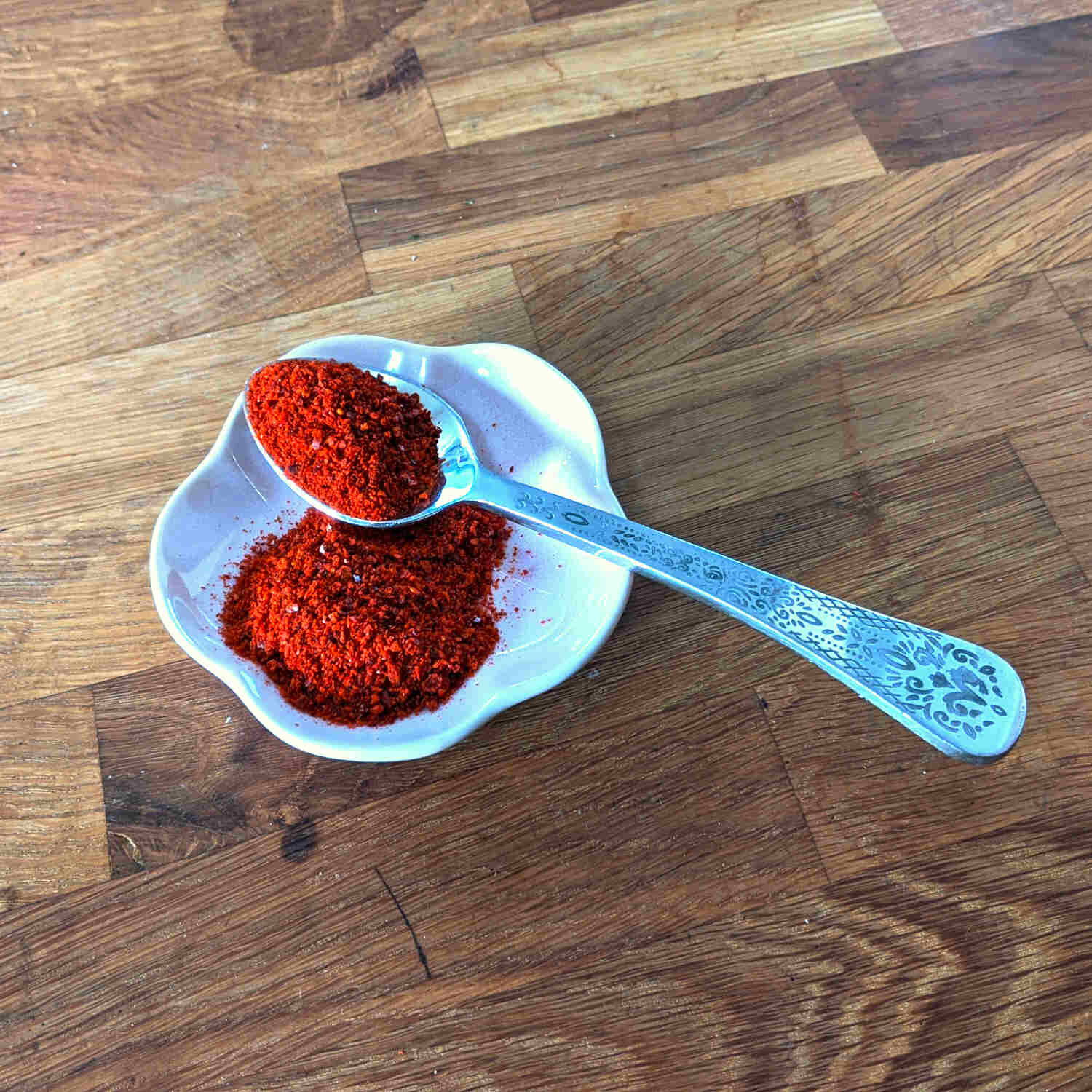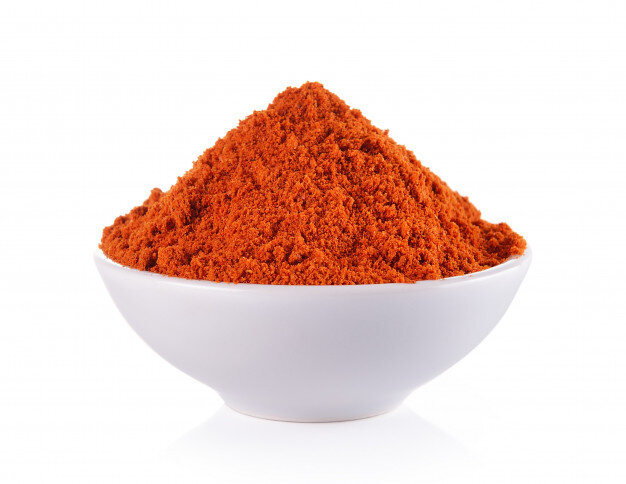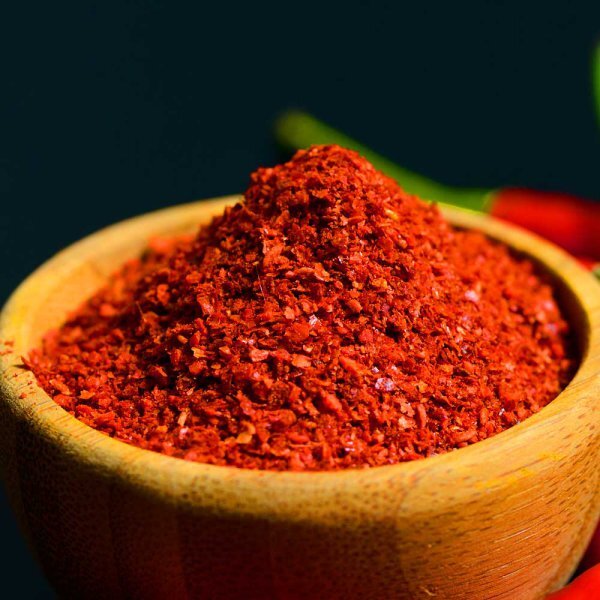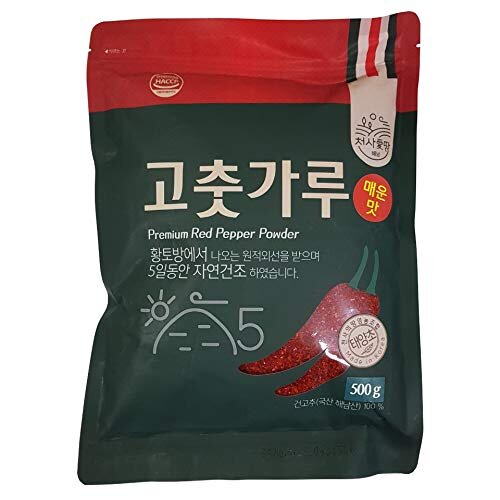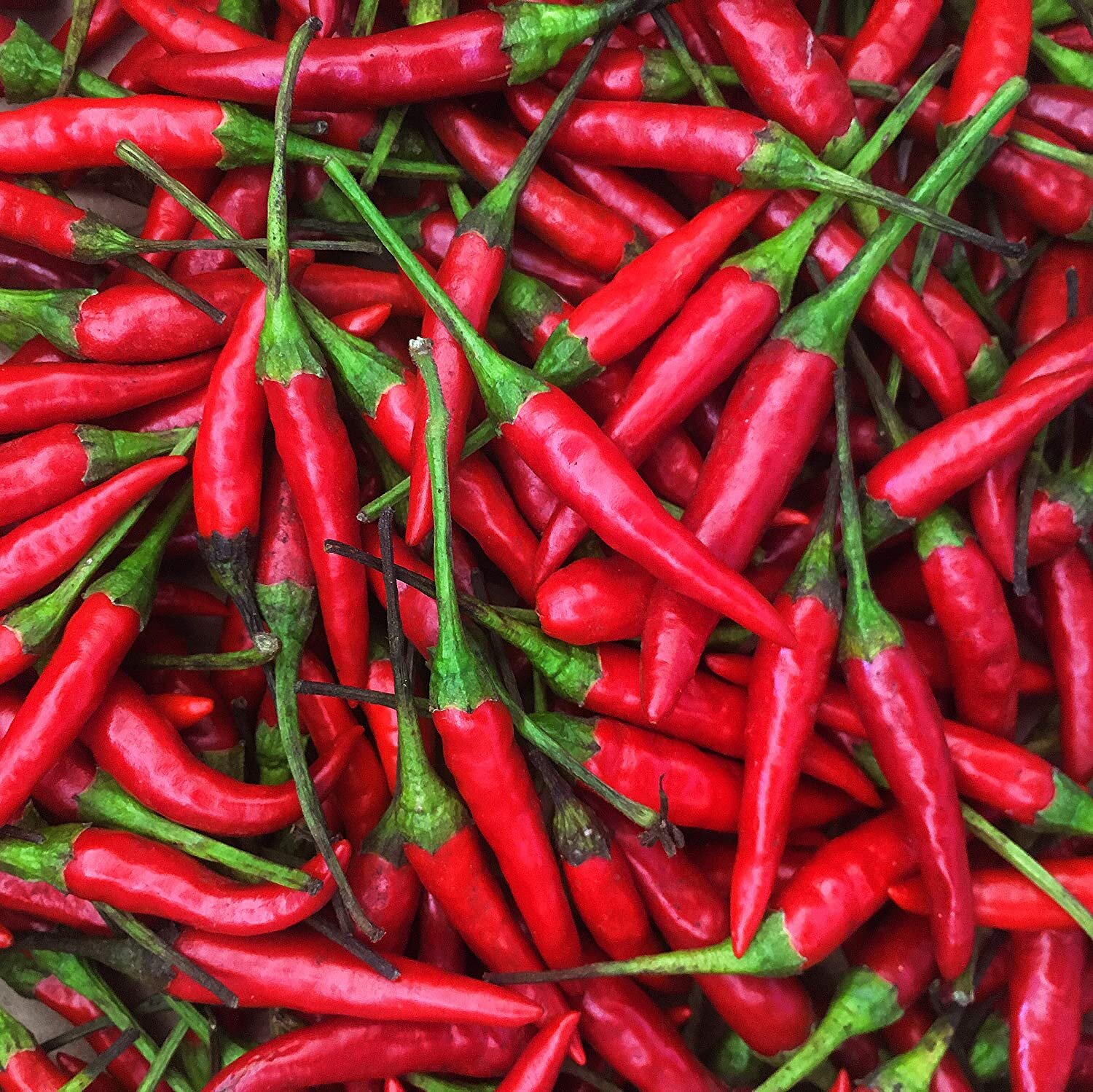Korean Red Pepper Powder
GOCHUGARU.
“GO - CHOO - GAH - ROO”
This is THE quintessential Korean ingredient that gives Korean food its signature colour and heat. Oh yes, talk to anyone about Korean food and they think of RED, HOT, SPICY dishes like Tteokbokki (Spicy Rice Cakes), Kimchi Jjigae (Stew) or Jjamppong (Spicy Seafood Noodles).
But here’s the deal. GOCHUGARU is actually not that spicy (insert shocked emoji).
THE KOREAN GREEN PEPPER
KOREAN PEPPERS TURN RED WHEN RIPE. THESE ARE DRIED AND READY TO BE GROUND.
Scoville Score (Spicy Rating) Standing
Carolina Reaper 2,200,000
Cayenne Pepper 50,000
Jalapeno Pepper 5,000
KOREAN GREEN PEPPER (GOCHUGARU) 1,500
Banana Pepper 500
The spicy Korean pepper: CHUNG-YANG GOCHU. It’s still friendly with a lower heat level than the jalapeno. Looks deceptively similar to the regular Korean green pepper. Confusing… and fun!
(Image: 2.0 Korea -CC BY 2.0 KR)
In Korea, they have Red Pepper Powder with varying levels of spiciness. They also have something called CHUNGYANG GOCHUGARU which uses Korea’s spiciest pepper. But even CHUNGYANG pepper is a modest 6,000 on the Scoville Scale. Of course, regions with varying climates may affect pepper crops and yield spicier (or less spicy) varieties. But on the whole GOCHUGARU isn’t a crazy hot ingredient. Like any spice, just add more to adjust to your tolerance levels.
The general term Korean Red Pepper “Powder” is actually a bit of a misnomer as the most widely available product comes in the form of flakes. They do sell a fine grind (read: powder) but because most people buy it to make kimchi or stews, not everyone (read: me) buys actual powder.
Finely ground GOCHUGARU.
Coarse ground GOCHUGARU. Usually marketed as being for Kimchi-making.
GOCHUGARU flakes: Used for kimchi, stir-fry, marinades. Can also be made into an all-purpose by grinding it yourself.
GOCHUGARU powder: Very fine ground powder. Used to make GOCHUJANG Red Pepper Paste, certain soups (where you want some heat and colour but don’t want to see big flakes floating on top), summer kimchi (the watery kind where you don’t want big flakes) or when you just don’t want big flakes stuck between your teeth after eating. Basically, it’s used for a nicer presentation. AKA unnecessary- shhh let’s keep it to our selves.
This ingredient is essential because it is a crucial part of kimchi- so for that alone, it is always stocked in a Korean food lover’s pantry. But even if you only use it on the occasional tteokbokki craving once a month, it is a nice spice to have. Korean pepper powder is smoky, sweet with a gentle heat that builds up and can be added to your spice arsenal. If you enjoy the taste profile of Korean food, you will most likely appreciate its addition to other recipes that can use some personality (talking about you, chicken breast).
GOCHUGARU STORING TIPS:
Like any spice, keep in a cool, dark place away from sunlight.
Keep a small jar in a drawer or cupboard for regular use.
Keep the rest in the fridge in a closed container/ziploc bag.
For long-term storage, it will stay fresh longest in an airtight container in the freezer.
How to gauge the quality of GOCHUGARU?
Origin of the peppers
How it’s been processed
Originally, peppers would be harvested, then dried in the sunlight. This may take up to 2 months. Today, however, mass production demands a much tighter deadline. People say to look out for the word TAE-YANG-CHO 태양초 on the packaging. This word means it was dried naturally in sunlight. In a perfect world, all of the millions of packages distributed all over the world bearing this marking would have been dried in one layer, in a massive greenhouse and turned several times to ensure even drying under a month’s worth of full sun.
Don’t shoot the messenger, but honestly, they will all have gone through some mechanical drying process (factory dryer/dehydrator) at some point. They may have started drying in the sun, but if it starts raining for a week, the farmers have to keep drying the peppers or they will lose their whole crop to mold. But then it’s sunny again so maybe they put it out in the sun again. It’s a funny thing to have to think about a farmer’s plight, but there it is. Korean ingredients, at their core, are very nature-dependant (Is that even a word? Tell me you know what I mean).
Gochugaru, gochujang, doenjang, ganjang, fish sauce. They all used to take time. A lot of it. Nobody’s got time for that now. Not complaining, I wouldn’t be happy if I was on a months-long waitlist to buy soy sauce or pepper flakes. It is what it is.
The happier news is that the nutritional difference between mechanical drying and natural sunlight is minimal. The not so happy news is that you may (or may not!) notice a difference in taste. Purists will shout from the rooftops about the superiority of gochugaru dried in sunlight. But in my opinion, the next point is a more important factor to consider.
The origin of the peppers. Now I am not a “only buy Made-in-Korea!” fanatic. But in this particular scenario, I will tell you that I make sure to purchase GOCHUGARU made from 100% Korean peppers now. It just doesn’t matter what you do to the food- if the ingredient itself is subpar, the results will be disappointing. Story time: I made kimchi. It took some effort. I put GOCHUGARU that I bought randomly because it was on sale and didn’t know this could happen. Embarassing kimchi. Internal tears were shed.
Try to get one made with Korean peppers (like this one, this one, or this one). However, I will say this. If all you have available in your area is GOCHUGARU with peppers from another country (like this one), you may not notice terrible results if you cook with it. You are most likely adding other ingredients as well and it seems to do okay. But kimchi is so heavily reliant on this element, I’d try to find something online. But sometimes, you just may not have a choice in your local market in which case, better to have kimchi than not!
Final thoughts. It’s best kept in the freezer. Keep a jar handy for cooking but put the rest in a ziploc bag and pop it in the freezer. You honestly don’t need to buy both the flakes and the fine powder. Unless you use both so often you need to stock each kind- if you are this person, you must be a cooking master and I am humbled by your presence. Otherwise you can use simple hacks to get by. For any recipe that requires fine powder, you can use coarse flakes and strain the flakes out. Inconvenient? Give them a turn in your blender. Ta-da, fine powder at your service.
Also known as the tiny but MIGHTY SPICY Thai Bird's Eye Chili Peppers. Scoville range 50,000-100,000. Mm-mmm!
Bonus Tip! Do you find the GOCHUGARU spice levels just don’t cut it for you no matter how much you add? Do what many Korean spice addicts do and add the more readily available Thai chilis in addition to GOCHUGARU to any dish you’d like to fire up. High five, fellow spice lover.
You may also be interested in: How to Store Korean Ingredients

